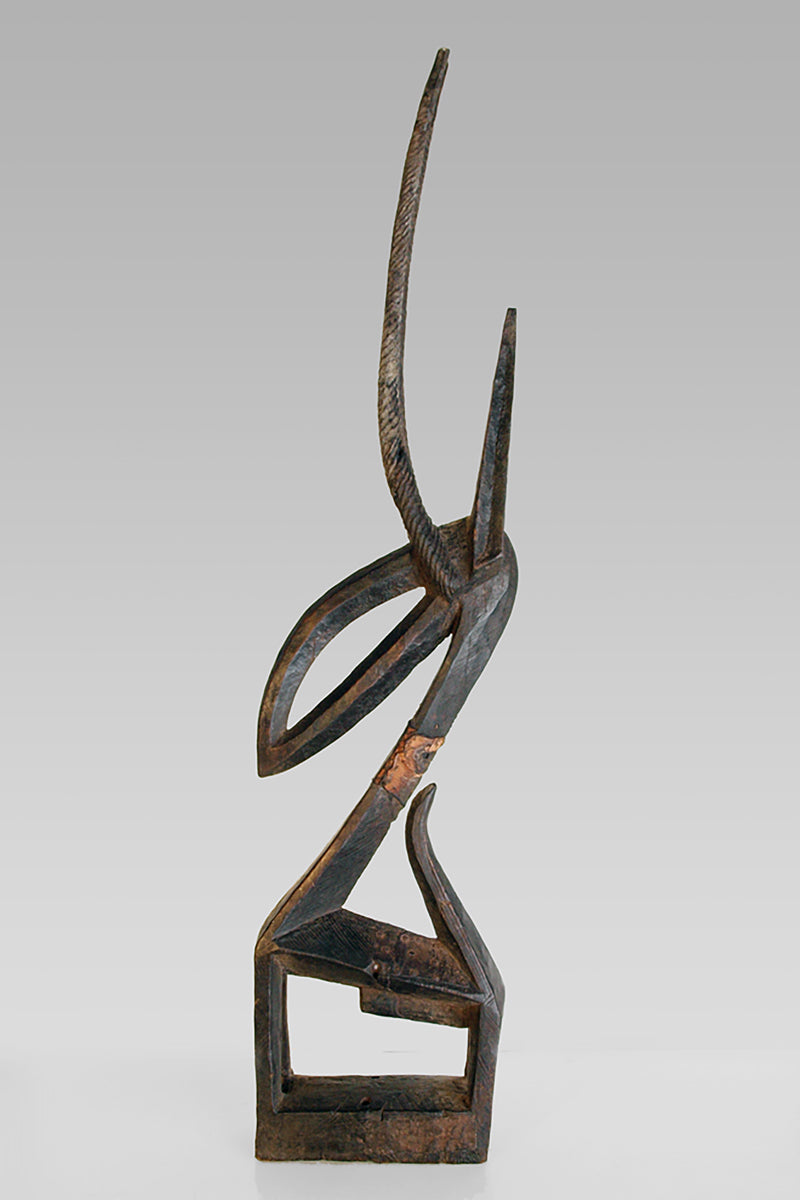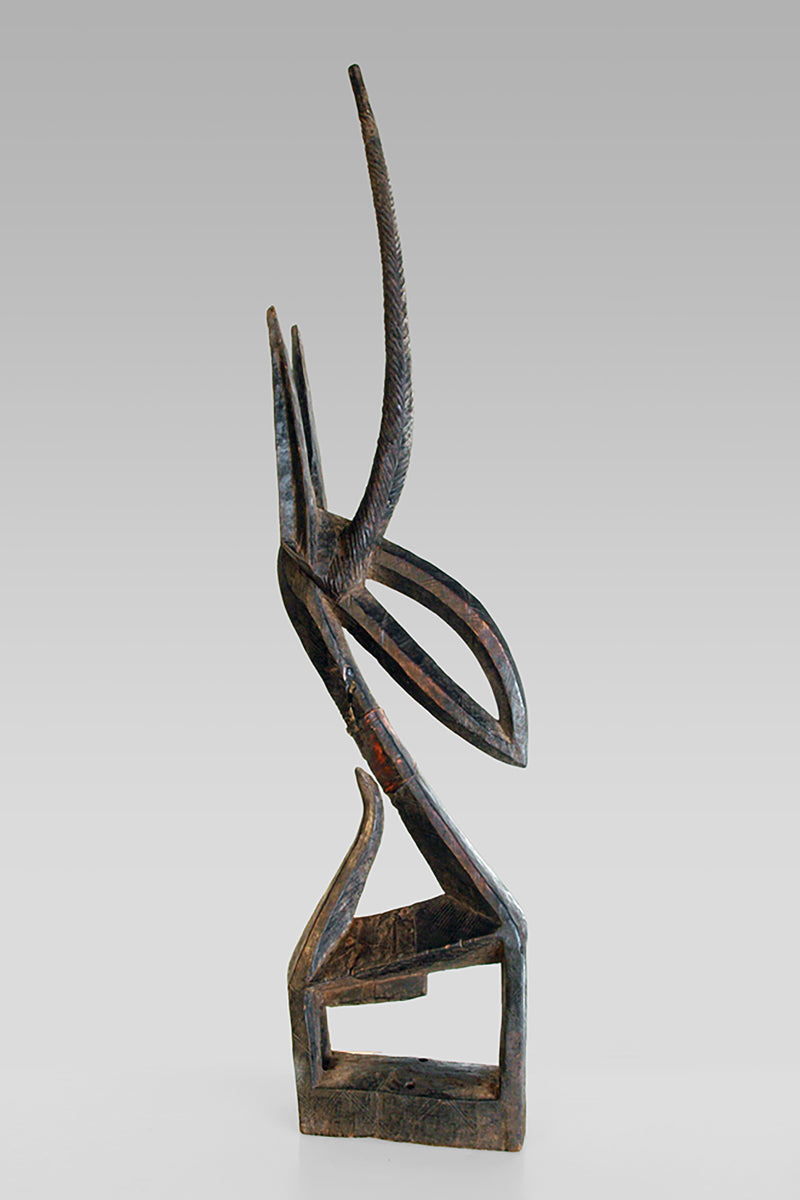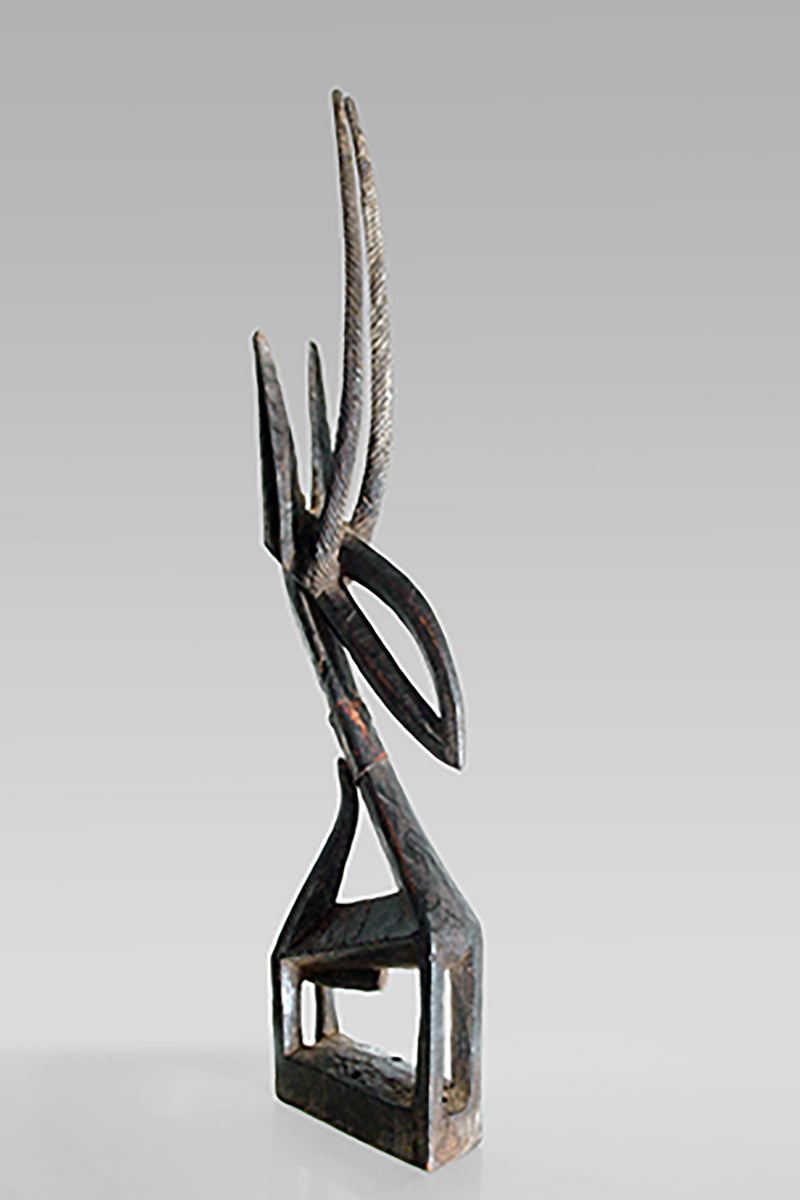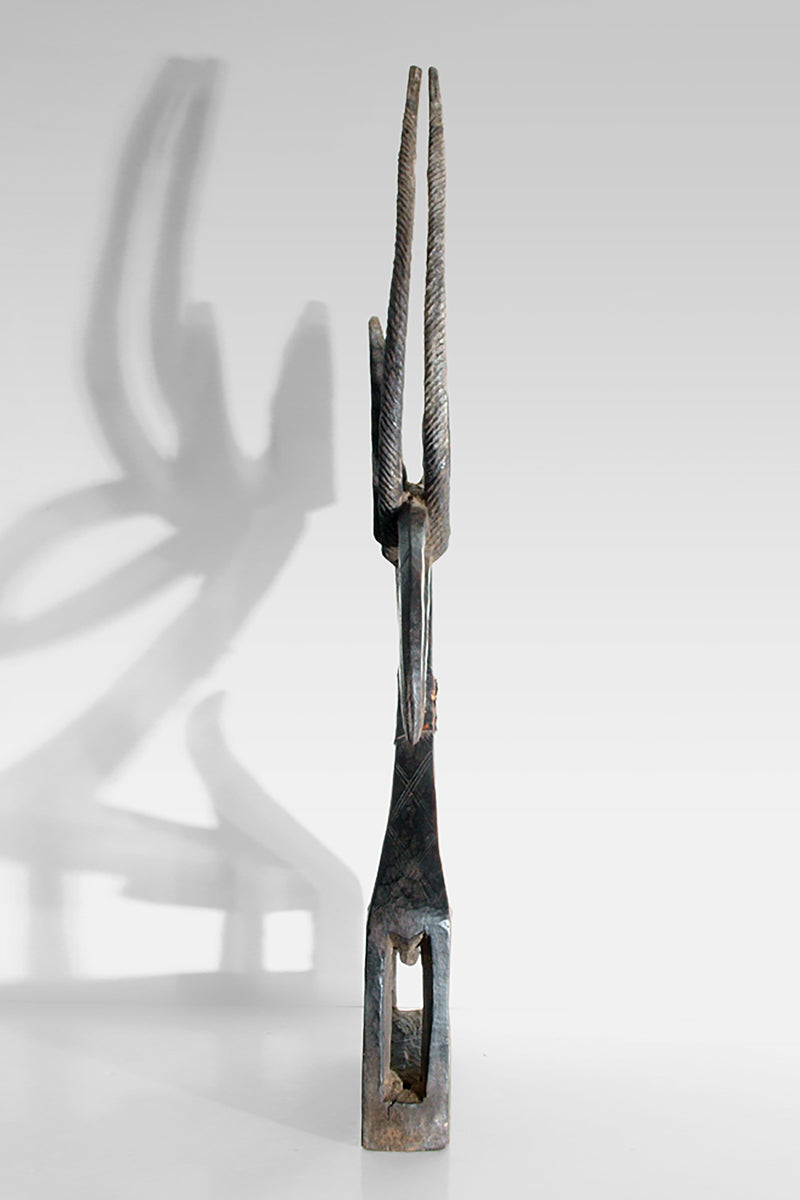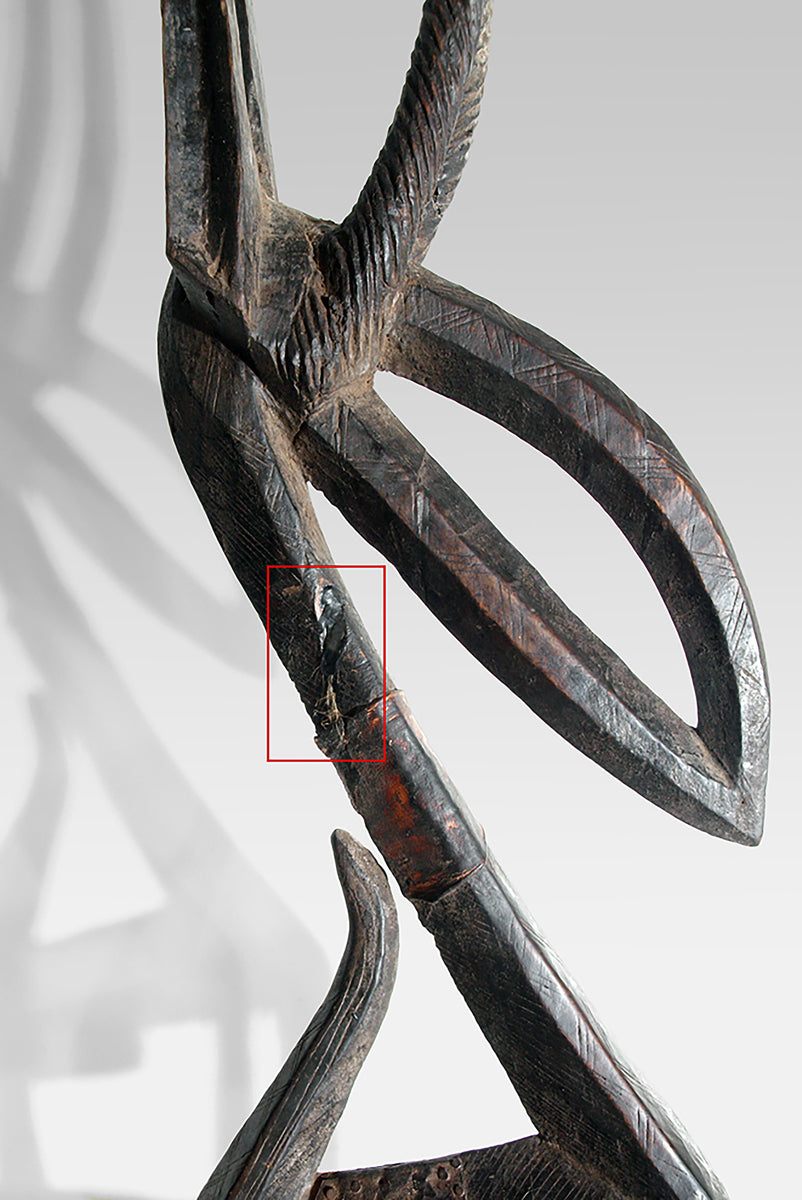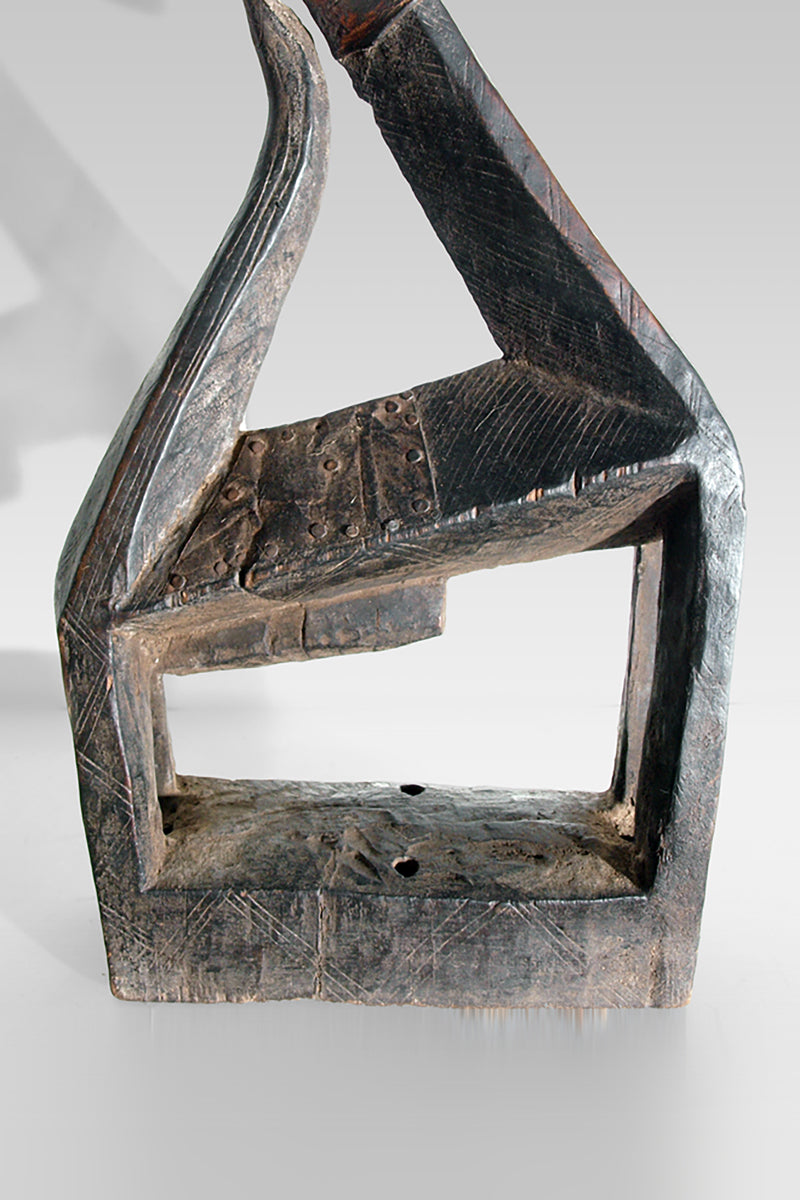Galerie Wolfgang Jaenicke
A high abstract male Bamana Ci Wara
A high abstract male Bamana Ci Wara
Couldn't load pickup availability
A high abstract male Bamana Ci Wara sculpture of the Sikasso region; several repairs and cracks, a leather bandage at the neck. Now Collection Dr. Kraus, Mainz, Germany.
The Chi Wara (also spelled Ciwara) headdress occupies a unique place at the intersection of spirituality, agriculture, and artistic abstraction within Bamana society of Mali. More than a sculptural object, the Chi Wara is a powerful cultural symbol, encapsulating myths of origin, communal values, and artistic excellence. Its significance extends beyond ritual practice, having influenced the trajectory of modern art in the West and maintained a strong presence in museum collections and exhibitions to this day.
According to Bamana mythology, the Chi Wara is a half-human, half-antelope spirit born from the earth goddess Mousso Koroni. This mythological figure is credited with teaching humanity how to cultivate the land, thus enabling the foundation of agrarian life (5masksoftheworld.com). The myth underpins the function of the Chi Wara in ritual and social contexts, especially in relation to farming seasons. Through its embodiment of agricultural wisdom, the Chi Wara has become a symbol of fertility, discipline, and productivity within Bamana cosmology.
The Chi Wara headdress is primarily used in ritual dances during planting and harvest periods. These performances are conducted by male members of Chi Wara societies, who wear the carved headdresses along with raffia costumes. The dancers imitate the movements of an antelope—leaping, scratching, and digging into the earth—to celebrate the symbiotic relationship between human labor and the land (maa.missouri.edu). This ritual act not only honors the Chi Wara spirit but also reinforces community values such as cooperation, gender balance, and the sacred duty of farming.
The performance often features a paired headdress: a male and a female Chi Wara. The male is typically taller and more upright, sometimes incorporating phallic imagery, while the female may carry a smaller antelope (a calf) on her back, symbolizing fertility and nurture. This duality reflects Bamana philosophical ideals about the complementarity of male and female roles in both agriculture and society (maa.missouri.edu).
Chi Wara headdresses are traditionally classified into three main styles: vertical, horizontal, and abstract. Vertical forms are most commonly associated with the Bamako region; horizontal styles with the Segou region; and more abstract versions with the Bougouni area. Despite their variations, all Chi Wara forms exhibit a blend of naturalism and abstraction, with elongated forms, stylized horns, and geometric motifs (en.wikipedia.org).
These stylistic differences are not merely regional but also reflect the aesthetic signatures of individual carvers and local workshop traditions. The abstraction seen in Chi Wara sculptures is not accidental; it is a visual language that communicates spiritual potency and ritual efficacy (en.wikipedia.org).
The formal qualities of Chi Wara headdresses attracted the attention of early 20th-century European artists. The stylized abstraction and expressive energy of these African sculptures resonated deeply with modernist aesthetics, particularly among artists seeking alternatives to classical Western forms. Notable figures such as Pablo Picasso, Georges Braque, Constantin Brancusi, and Fernand Léger drew inspiration from African art, including Chi Wara, in their search for new visual vocabularies (maa.missouri.edu). This cultural exchange—often uncredited at the time—played a significant role in the development of Cubism, Primitivism, and early abstract sculpture.
Since the 1920s, Chi Wara pieces have been included in major museum exhibitions and private collections. While this global recognition underscores their aesthetic significance, it also raises complex questions about cultural appropriation, ownership, and the decontextualization of sacred objects.
Chi Wara headdresses are housed in numerous prominent museums across the United States. The Metropolitan Museum of Art in New York holds several 19th–20th century pieces from the Rockefeller collection (metmuseum.org). The Museum of Fine Arts in Boston features a mid-20th century female headdress with a calf (metmuseum.org), while the Cleveland Museum of Art exhibits early 1900s versions adorned with beads and shells (clevelandart.org). The Art Institute of Chicago permanently displays a male–female pair from the Baninko region (1850–1925) (masksoftheworld.com), and the Spencer Museum of Art at the University of Kansas uses its 1950s female headdress in educational contexts (masksoftheworld.com).
Although there are no major Chi Wara-only exhibitions scheduled for mid-2025, these works continue to appear in thematic displays focusing on African art or its influence on modernism (metmuseum.org, maa.missouri.edu). This continued visibility affirms the relevance of Chi Wara as both a cultural artifact and an aesthetic benchmark.
The Chi Wara headdress exemplifies how art, myth, and social function can merge into a powerful and enduring cultural form. Rooted in the agricultural rituals and spiritual beliefs of the Bamana people, the Chi Wara transcends its original context through its impact on modern art and its continued presence in global collections. As both a sacred object and a modernist muse, the Chi Wara reminds us of the deep interconnections between creativity, culture, and community.
Height: 99 cm
Weight: 1,2 kg







